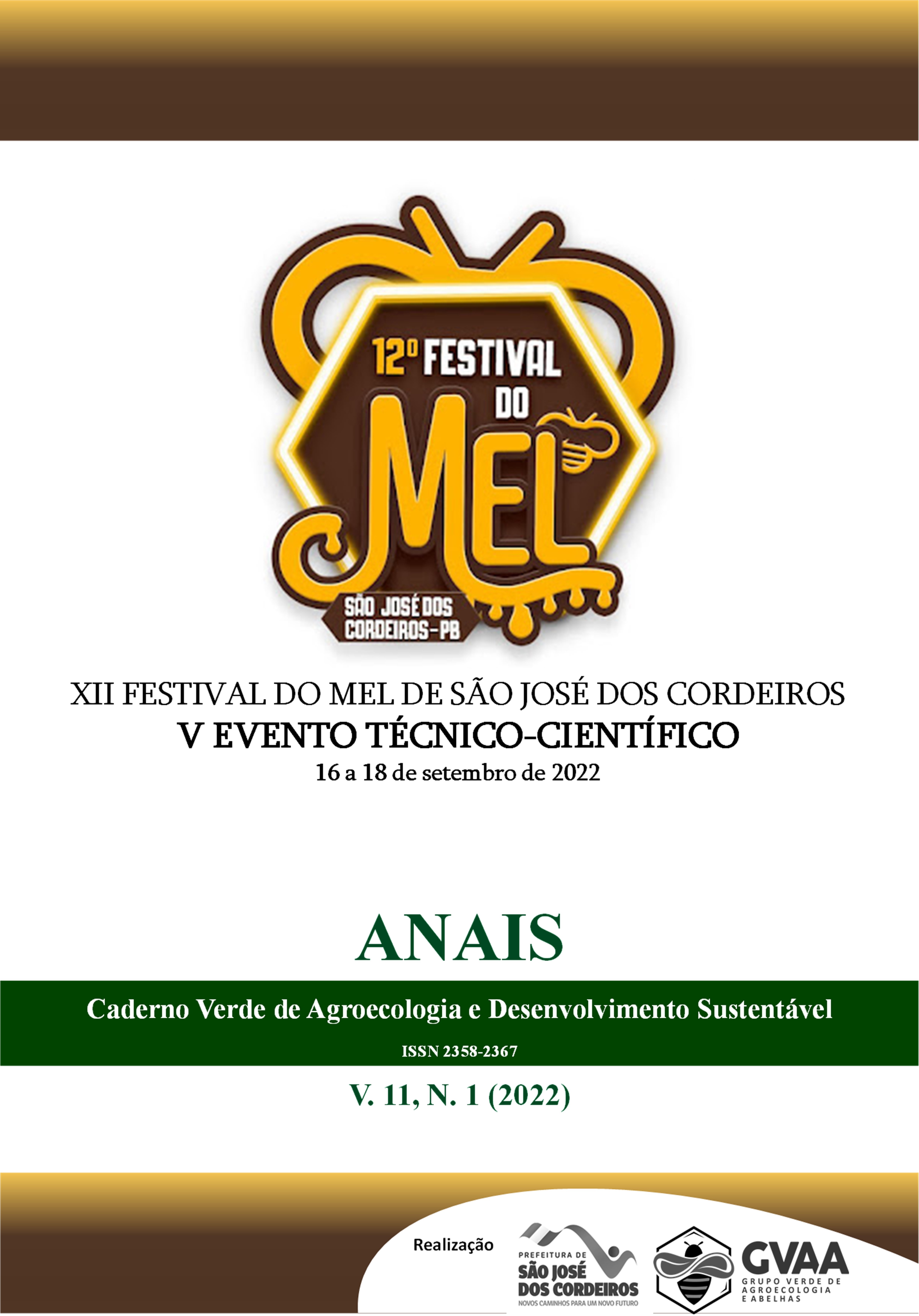Behavior of Apis mellifera beehives for genetic selection in the microregion of Catole do Rocha, Paraiba, Brazil
Keywords:
Bees, Aggression, Hygienic behaviorAbstract
Aggression is seen as a defensive behavior performed by bees, which, when disturbed, protect themselves against natural enemies. Hygienic behavior is a genetic characteristic of significant importance for the control of threats to hives. This research seeks to evaluate the defensive and behavioral characteristics of Africanized bees of the genus Apis mellifera in hives on Campus IV of the State University of Paraíba Campus Catolé do Rocha. Data were collected from seven wild swarms captured in Langstroth model bait boxes. Aggression tests were performed from 7:00 am to 10:00 am (H1), from 12:00 pm to 2:00 pm (H2) and from 3:00 pm to 5:00 pm (H3). Aggressiveness was measured by the method of Stort (1974), with adaptations, in which (i) the time spent for the bees to become enraged, (ii) the time spent until the first sting in the styrofoam and (iii) the time taken for the bees to settle down in the hive. The study of the hygienic behavior was carried out based on the method of perforating the cells of offspring. Descriptive data analysis was performed using SAS. For the infuriation of the bees, an average time of 39 seconds was observed between 07:00 and 10:00, which is a statistically different measure from those observed in H2 and H3, which were, respectively, 24 and 21 seconds. The hives involved in the research showed a high level of hygienic behavior, as, on average, they collected in 24 hours, 87.25% of the cells of perforated and/or damaged hatchlings.
Downloads
Published
How to Cite
Issue
Section
License
Termo de cessão de direitos autorias
Esta é uma revista de acesso livre, em que, utiliza o termo de cessão seguindo a lei nº 9.610/1998, que altera, atualiza e consolida a legislação sobre direitos autorais no Brasil.
O(s) autor(es) doravante designado(s) CEDENTE, por meio desta, publica a OBRA no Caderno Verde de Agroecologia e Desenvolvimento Sustentável, representada pelo Grupo Verde de Agroecologia e Abelhas (GVAA), estabelecida na Rua Vicente Alves da Silva, 101, Bairro Petrópolis, Cidade de Pombal, Paraíba, Brasil. Caixa Postal 54 CEP 58840-000 doravante designada CESSIONÁRIA, nas condições descritas a seguir:
O CEDENTE declara que é (são) autor(es) e titular(es) da propriedade dos direitos autorais da OBRA submetida.
O CEDENTE declara que a OBRA não infringe direitos autorais e/ou outros direitos de propriedade de terceiros, que a divulgação de imagens (caso as mesmas existam) foi autorizada e que assume integral responsabilidade moral e/ou patrimonial, pelo seu conteúdo, perante terceiros.
O CEDENTE mantêm os direitos autorais e concedem à revista o direito de divulgação da OBRA, com o trabalho simultaneamente licenciado sob a Licença Creative Commons do tipo atribuição CC-BY.
O CEDENTE têm autorização para distribuição não-exclusiva da versão do trabalho publicada nesta revista.
O CEDENTE têm permissão e são estimulados a publicar e distribuir seu trabalho online (ex.: em repositórios institucionais ou na sua página pessoal) a qualquer ponto antes ou durante o processo editorial, já que isso pode gerar alterações produtivas, bem como aumentar o impacto e a citação do trabalho publicado.








